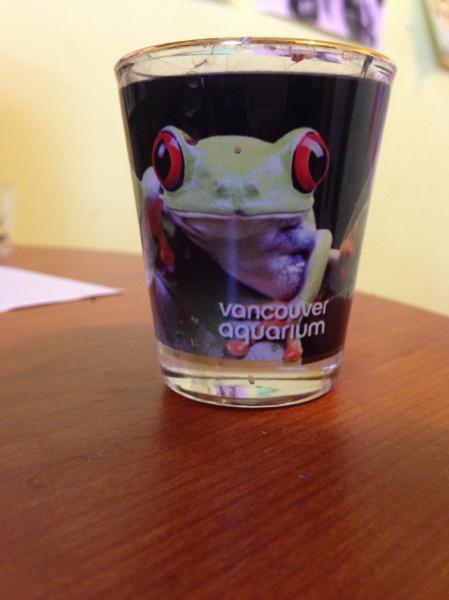I picked today’s animal mostly based on its looks — colourful animals are just really fun to draw. Apparently my past self felt the same way as well, because I have a painting of a red-eyed tree frog I did six or seven years ago on my bedroom wall.

Red-eyed tree frogs are native to Central America, from southern Mexico in the north to Panama and a tiny bit of Colombia in the south. They live in rainforest habitats, particularly in places near rivers. If you haven’t figured it out from their name, I’ll tell you just to be super clear: red-eyed tree frogs like trees. They spend almost all their time in trees, and are primarily nocturnal.
The stunning red eyes of this frog aren’t the only colourful part of its body. Their backs are mostly bright green, and they have yellow and blue vertical stripes on their sides. The upper part of their legs are a pretty, rich blue, while their feet are a startlingly brilliant orange or red. Altogether, red-eyed tree frogs are a wonderful melange of colours that makes them a joy to look at (and to draw!).
Tree frogs don’t get to be super large, reaching between about 3.5 and 7 centimetres in length. Female frogs are typically larger than males. Their long back legs make red-eyed tree frogs excellent jumpers, and suction cup-like structures on their toes means tree frogs can stick to pretty much any surface. That’s a pretty useful skill when you spend your life in trees.
A lot of brightly coloured animals are poisonous, their striking colours a warning to any predator that might think about eating them. This is not the case with the red-eyed tree frog. Their bright green colouring actually helps them camouflage against tree leaves. During the day red-eyed tree frogs sit on leaves with their eyes closed and their blue spots covered by their hind legs, praying no hungry animal notices them.

If a predator does happen by, the frogs open their eyes suddenly, staring right at the predator. Bright red eyes coming from a green lump may startle the predator just long enough to allow the frog to leap away. I’m not quite sure how effective this defensive strategy is, but red-eyed tree frogs seem to be doing pretty well.
Reproduction in red-eyed tree frogs begins with males advertising their presence to any females in the area. They do this by calling loudly, and quivering on leaves to establish territory. Once a female shows up, all the males in the area jump on her back, vying of the best position. Occasionally multiple males will cling to a female’s back while she is trying to find a good spot to lay her eggs, and she may have to carry them around for hours, sometimes even days.

Females lay clutches of around 40 eggs, on leaves that hang over puddles or ponds. Males stay on the females’ backs while they lay their eggs, fertilizing them as they are laid. The eggs develop into tadpoles quite quickly, and the tadpoles swim around inside the eggs until they rupture. Once the eggs have ruptured, the tadpoles are washed down into the pond waiting below, where they can complete their metamorphosis and become adults.
Thanks to their beautiful colouring, red-eyed tree frogs are popular in the pet trade. Thankfully, they are not yet threatened, though their population has been declining. Pollution, habitat destruction and deforestation are all significant threats to red-eyed tree frogs, so we ned to keep an eye on these guys to ensure they stick around!
Cover image by Geoff Gallice from Gainesville, FL, USA, CC BY 2.0, via Wikimedia Commons, cropped to fit
